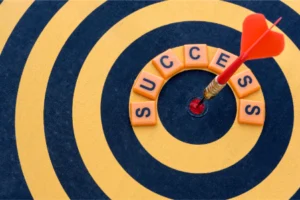Every organization needs a roadmap for the future – a growth strategy that guides them
towards survival and prosperity. This strategy defines the actions needed to bridge the gap
between the current state and the desired future state. However, a well-defined strategy
alone is just the first step. For true success, a robust growth engine requires additional
elements:
The Foundational Questions: Why, What, and How Not
Before crafting a growth strategy, a clear understanding of the organization’s purpose is
crucial. Why does the organization exist? What does it aspire to achieve within the
framework defined by its purpose? Equally important is defining the “how nots”, guided by
the organization’s core values. Only then can the “how to” of the growth strategy take
shape.
Strategy and Implementation: A Winning Formula
A well-defined strategy outlines the “what” and the “why”, but achieving those goals
requires a roadmap for “how”. This involves:
● Defining Assumptions: Identifying the underlying beliefs that shape the strategy.
● Action Items: Breaking down the strategy into actionable steps with clear ownership
and deadlines.
● Must-Win Battles: Prioritizing the most critical victories needed for success.
Developing the Organization: Building the Ship for the Journey
Growth doesn’t happen in a vacuum. Organizations, like ships navigating rough seas, need
to constantly evolve to handle increasing complexity. This necessitates a parallel strategy for
organizational development, focusing on:
● Structured Planning: Creating a roadmap for internal development aligned with the
growth strategy.
● Action Items and Must-Win Battles: Identifying internal areas requiring improvement
and prioritizing the crucial battles for success.
● Overcoming Internal Resistance: Acknowledging and addressing resistance to change
within the organization.
The Synergy of Strategy and Development
A successful growth engine hinges on the synergy between the external growth and the
internal development strategy. Only when organizations acknowledge this and actively
develop their capabilities can they effectively implement their growth plans.
Conclusion: A Holistic Approach for Sustainable Growth
Building a robust growth engine requires a multi-faceted approach. By addressing not just
the “what” and “why” but also the “how” of implementation and the crucial element of
internal development, organizations can navigate the complexities of growth and achieve
long-term success.







